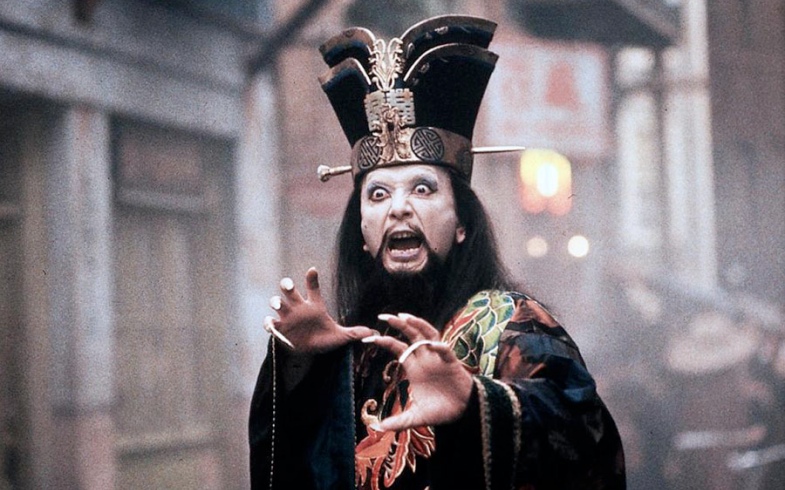
Call it a guilty pleasure. Call it the virtue of a lifetime watching movies. Call it inexplicable drunkenness. Call it stupidity. All of the movies on this list have somehow woven their way into my life—my cinematic life, anyway—for good or ill. Most of the films on this list can be found looping themselves in horrible blocks of time, somewhere on cable television, usually edited for the consumption of 8-year olds.
Is there anywhere else other than AMC or TBS or the Sci-Fi Channel, where “Conan the Destroyer” turns into a 2 ½ hour epic? Somehow, I end up watching these things the whole way through, feeling as if I need to go off and pray in some dark corner, promising the Movie Gods that it’ll be last time I watch one of these horrible things. Stupid Movie Gods—they never listen.
A brief note: None of the films on this list are numbered, or ranked, best-to-worst, in any way. The “sword and sorcery” films are listed in chronological order, from the earliest (Dragonslayer) to the latest (“Conan the Destroyer”), in order to give the reader some idea of the rise and fall of the sub-genre.
1. Body Double
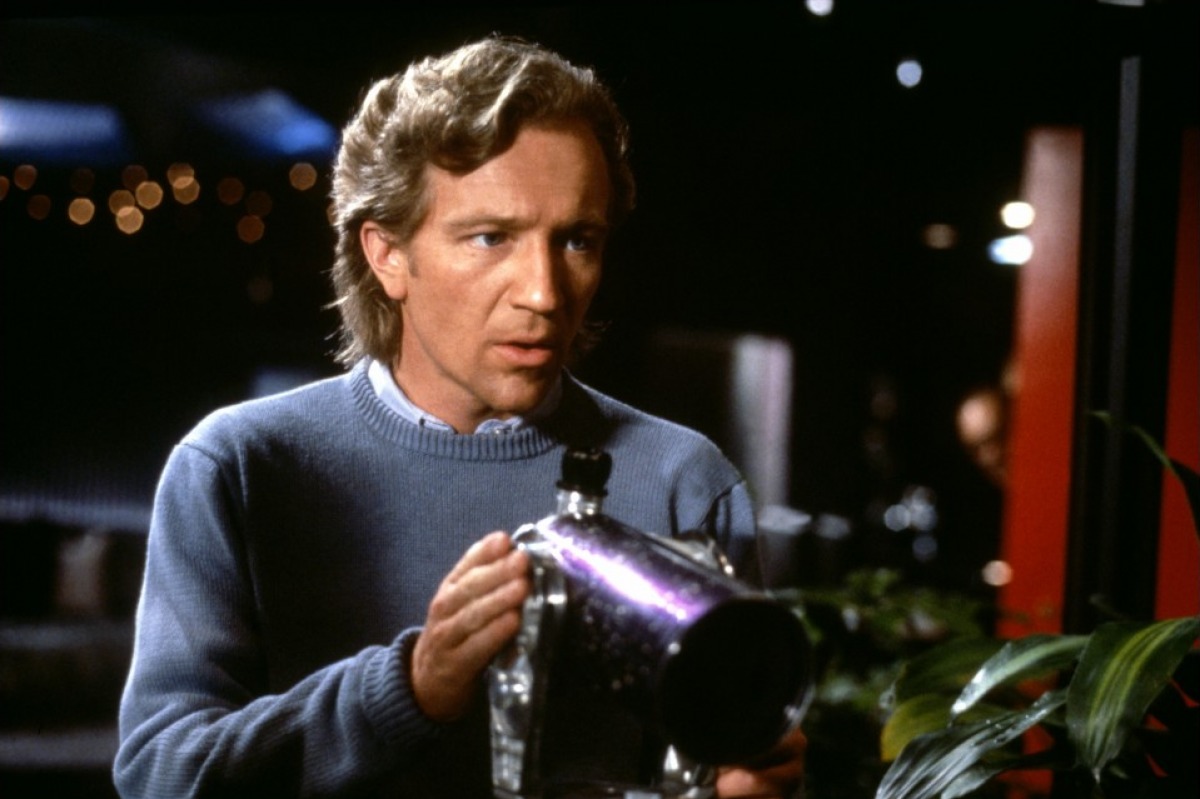
If the films on this list can be said to vary in quality—we’ll get to some of the questionable entries in a bit—it seems appropriate to kick off such a list with a film by Brian DePalma, a man who has built a career on providing audiences with guilty pleasures.
I have no trouble admitting to more than a passing fondness for Body Double, indicative as it is of everything that makes DePalma who he is as a filmmaker: spectacular violence, spectacular nudity and fleshliness, and meticulous, drawn-out set-pieces, in which DePalma attempts to imitate his great Master, Alfred Hitchcock.
A none-too-subtle homage to Hitchcock’s Rear Window and Vertigo, Body Double reminds us that voyeurism, no matter how well-intentioned, is a diagnosable psychological anomaly still to be found in the DSM-V, as well as an arrestable offence.
Psychological quirks aside, several moments in Body Double are more than laudable in quality, presenting us with set-pieces that few directors other than DePalma could pull off. We watch as the film’s main character, Jake Scully, obviously stalks the object of his obsession and desire through the Los Angeles Galleria, hoping to better understand who she is and who may be trying to kill her.
Much like Hitchcock, the sequence is a nearly dialogue-free, flawless exercise in film form, composed of lingering, wide, tracking shots, which culminates in a mostly-clothed make-out session between Jake and his dream girl, Gloria Revel, in an access tunnel surprisingly free of people, on an L.A. beach.
Later on, DePalma is bold enough to pay homage to the porn industry, as out-work-actor Jake finagles his way into a role in a porn film in order to question Melanie Griffith about her involvement in a supposed murder. DePalma’s boldness as a director is on full display here, as Jake wanders his way through a dance-club-themed set that will lead him to an obligatory sex scene with Griffith’s character.
“Relax,” by Frankie Goes to Hollywood, blares over the soundtrack, sex happens, but not before DePalma depicts the film’s camera crew, reflected in a full-length mirror, shooting the show that will go out to the masses. Everything is artificial; everything is representation.
Body Double isn’t perfect. Indeed, once the film reaches its second half, where the porn industry becomes a setting, as well as a plot device, the film actually slows down and becomes sluggish. DePalma’s camera lingers a bit too long on the nude female form at most times; consequently, the film’s encomium to the flesh can actually grow tiresome.
Nonetheless, most directors would kill to have a film as meticulously crafted as Body Double on their resume, even if we realize that the film is essentially an exercise in high-end sleaziness.
2. Dragonslayer (Sword & Sorcery Apologia I)
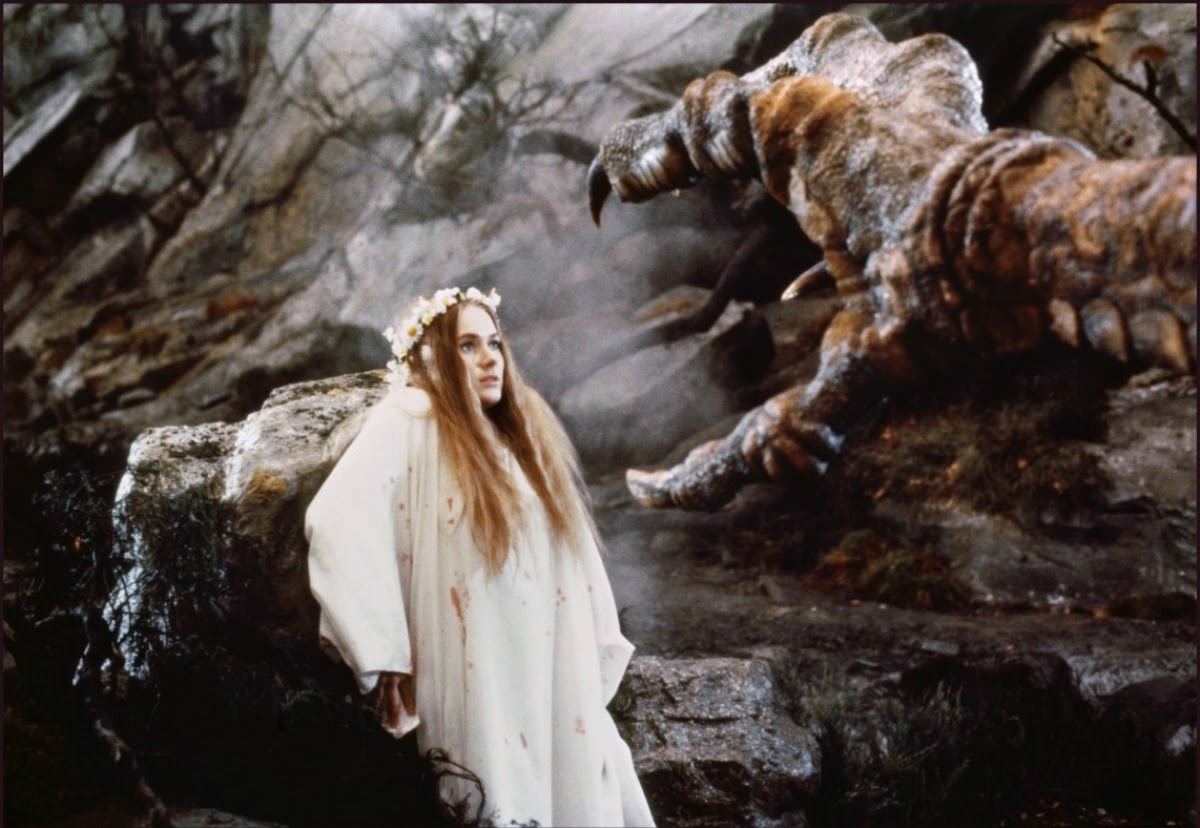
Back in the day, the early 80’s, that is, Hollywood became obsessed with two sub-genres of filmmaking: namely, post-apocalyptic sci-fi, and sword & sorcery. How the obsession developed is debatable; perhaps Hollywood noticed the nuclear arms race between the United States and the Soviet Union and thought:
Well, if the world is going to be blown to smithereens anyway, why not show people what it’s going to look like afterwards; similarly, Hollywood knew a good thing when they saw it with the just-burgeoning popularity of the “Dungeons & Dragons” roleplaying game and thought, There’s a plethora of material here for moviemaking. Hence, Dragonslayer.
Dragonslayer has many good things going for it. Decent dialogue, some of which is spoken by Ralph Richardson, arguably the greatest Shakespearean actor of the 20th century, excellent special effects that still hold up 35 years later, and an overall vision provided by director Mathew Robbins that is consistently mysterious, possibly even fatalistic.
We know the film isn’t fooling around when, in the very first scene, old sorcerer Ulrich, masterfully played by Richardson, in limited screen time, defines the film’s titular dragon as “…old, decrepit…spiteful.” By giving the dragon essentially human frailties, we immediately understand that it is a thing not to be trifled with. Encountering any dragon is a fool’s gambit, and encountering this particular film’s dragon can only mean a certain, fiery death.
When the dragon is actually encountered, it looms in magnificence over the film’s young slayer, Galen (played by an impossibly young Peter MacNicol), and we know that Galen’s stupid bravery has led him into a perilous quest.
Interestingly enough, by the time Galen finally has his impressive showdown with the dragon, we already know the fate the film’s princess-in-distress, a most ignoble one, to be sure, calculated to traumatize any 10-year old kid who thought he was going to be watching a fun, digestible, fantasy flick. I don’t want to ruin the moment for anyone who hasn’t seen the film, but you’ll know it when you see it.
As with all the films on this list, Dragonslayer has its flaws. Even as the film does have decent dialogue, the plot remains flimsy and trite, focusing on a “lottery” that the dragon has forced upon a humble village in order for it to remain dragon-free. There is also a love story which has little story and next-to-no love, largely because the chemistry between Galen and Valerian—a teenage girl who disguises herself as a boy in order to escape the village’s lottery—is essentially non-existent.
Whenever the film focusses on the village and its villagers, pacing and incident seem to fall flat, in general. Still, Dragonslayer, along with John Boorman’s magnificent Excalibur, can be said to be amongst the very best of the sword & sorcery sub-genre, as well as a somewhat surprising bit of filmmaking.
3. The Sword and the Sorcerer (Sword & Sorcery Apologia II)
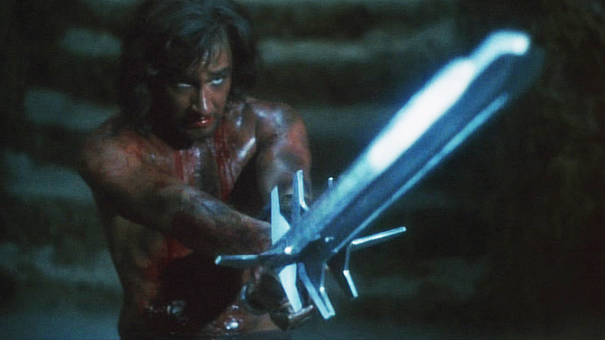
As if Dragonslayer and Excalibur weren’t enough (both films were released in 1981), Hollywood studios continued to churn out this stuff unabashedly into 1982. With The Sword and the Sorcerer, one can already see Hollywood getting ahead of itself, as the film becomes the first film of truly questionable quality on this list.
Strangely enough, the film starts out well, with an ultra-violent encounter with the sorcerer Zusia, who looks every bit like the re-animated corpse that he should be, who seems to have the ability to rip the spine out of anyone who isn’t paying attention to what they’re doing.
The scene is grotesque, but effective, and we are left thinking, Well, this thing could be a kind of amalgam between bloody horror film and high-fantasy epic. No such luck. Instead, the film plods along, as its main character, Talon, a rakish mercenary, encounters various palace guards, wizards, and thieves, on his way to kinda-sorta avenging the death his people when he was a young boy. If such an idea sounds dumb or convoluted, that’s maybe because it is.
So why watch the film at all? Maybe because it has excellent special effects, and is in fact indicative of a whole slew of horror and fantasy films and their fx wizards (from the classic, like “An American Werewolf in London,” to the distressingly squelchy, like “Xtro) who were trying to up the ante in terms of what could be done on screen.
Maybe because of the film’s weird trajectory and shelf-life after its initial release: The Sword and the Sorcerer was one of the first films to find itself in heavy rotation on HBO, usually late at night, when you’re supposed to be in bed. And perhaps, just perhaps, the film stood to inspire many a pre-pubescent kid as he played the first iterations of roleplaying games that seemed to be everywhere in the early Eighties.
Then, again, maybe not.
4. Piranha (2011)
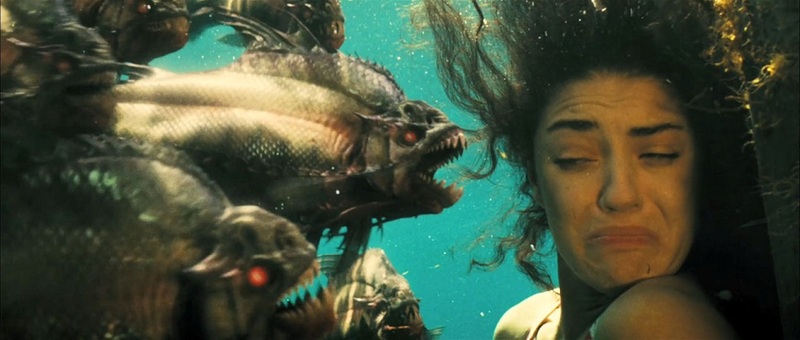
It’s easy to like director Alexandre Aja’s re-vamp of Joe Dante’s horror classic of the same name—just turn your brain off and go with it. Minor bouts of hedonism are the guiding principal of the film, set as it is at the resort center of Lake Victoria, during spring break. As one of the film’s characters inadvertently notes, Piranha may as well be subtitled, “boobs with fish.”
And that’s okay. The film is consistent in depicting youthfulness, and spring break specifically, as nothing less than a bacchanal of tequila, lots and lots of boobs, and harmless girl-on-girl sex. It is well that Aja, as a director, goes out of his way to establish such a trajectory, because it will be ripped away from us wholesale once the carnage starts.
“Carnage” isn’t quite the word to use as Aja and his beloved piranhas wreak havoc on Lake Victoria and its hundreds, if not thousands, of spring-breakers, all of them seemingly tanned, buffed, gorgeous, and under the age of 25. In fact, Aja has no qualms in using the cinematic equation usually found in “Friday the 13th” movies, that is: Sexual Promiscuity + Assholism /Stupidity=Violent Death, and using it to great effect.
Much of the second half of the film is essentially an extended montage sequence, as nearly every spring breaker we see on screen is messily chewed on, devoured, or unwittingly dispatched by outboard motors. Aja almost seems to be saying, Okay, you can have your fun, but just know that you’re going to pay for it in my maelstrom of blood and body parts.
Piranha is the epitome of a “stupid-fun” movie: nothing much to think about; decidedly well-made and consistent in its aberrant vision; that is, it’s easy on the eyes, to say the least. It is proof that a movie can still be fun, maybe even great, even as it throws pretentious homilies about “Art” out the window.
5. Cat People (1982)
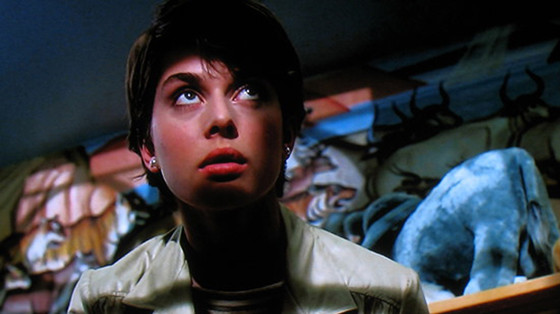
Paul Schdrader’s remake of Cat People has three great things going for it:
1.Nastassia Kinski at the apex of her beauty
2.Inspired production design
3.A cool soundtrack with David Bowie at his most creative
Sure, Nastassia Kinski’s beauty may be unearthly in this film; the film may look great, with fine camera work and editing throughout; the soundtrack may kick ass, with David Bowie and Giorgio Moroder working off of each other like a couple old pros—none of these things can save you from feeling like you need to take a shower after seeing it.
Proponents of the film will point out that Schrader’s remake simply brings to the surface the themes and unconscious desires that were merely hinted at in the Val Lewton-produced original from 1942, therefore bringing the Lewton film to its logical conclusion. Such an argument is specious, to say the least, as one can be reasonably certain that Val Lewton and his director, Jacques Tourneau, were not thinking of brother-sister incest, bestiality, or panther cum, when they made the original film.
Paul Schrader, on the other hand, already a filmmaker who had a penchant at depicting the seedier of urban existence by the time he made Cat People—he had penned the script for Scorsese’s “Taxi Driver,” and made his own feature film, “American Gigolo,” about the trials and tribulations of a male prostitute—has no compunction about rubbing our faces in the rich miasma of western taboo.
Panther cum aside, Schrader’s Cat People shares a distinct similarity with a film like Body Double, namely, it is the epitome of the “guilty pleasure” film. Schrader knew exactly what he had in Nastassia Kinski—-one of the most beautiful human beings ever put on screen (indeed, “Rolling Stone” magazine dubbed her as the “The Most Beautiful Girl in the World” in 1982) and he allows his camera to linger on her for as long as possible. We want to watch her, and Schrader knows it.
Melanie Griffith’s porn star in Body Double puts it even more succinctly: “You like to watch.” Yes, yes we do; thus, Cat People indulges our Id, even as it stomps all over our moral compass. How distressing.